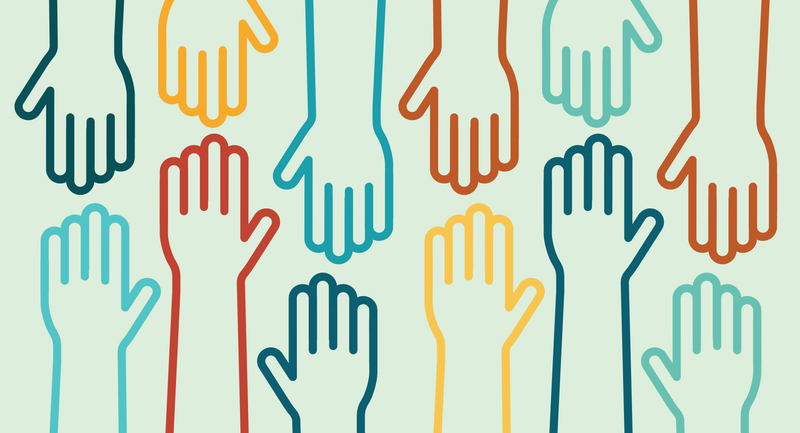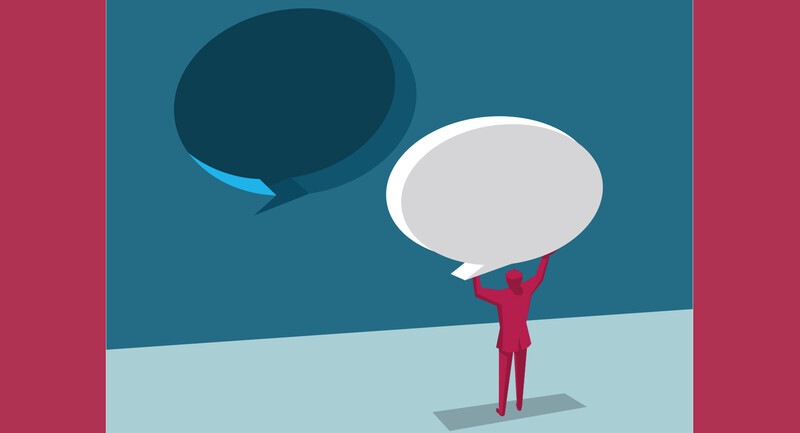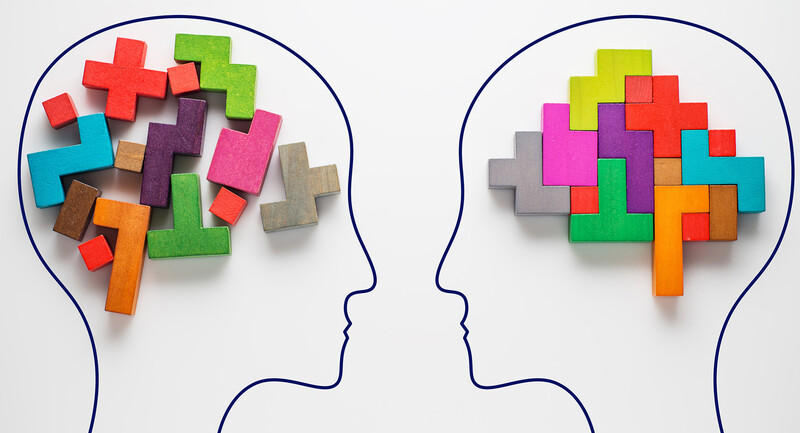With Thanksgiving fast approaching, gratitude will once again take its place at the center of our tables, nestled somewhere between the mashed potatoes and cranberry relish. Although gratitude may be an element of our family traditions or spiritual practices, emerging research points to gratitude as a potential bridge between students' academic and social well-being.
Studies show that grateful youth have higher GPAs; experience more positive emotions; and, ultimately, go on to live more meaningful lives. In addition, gratitude among middle school students can foster an increased sense of hope and trust in others and fuel a desire to give back to their community.
Giacomo Bono, a professor at California State University, Fullerton, has been at the forefront of that research and believes that the benefits of gratitude can be realized across the K–12 pipeline.
The most recent findings, presented by Bono and his colleagues at the annual meeting of the American Psychological Association, suggest that practicing gratitude at a young age promotes later development of self-control and self-regulation, which Bono says are resources for lifelong success.
Not surprisingly, the Greater Good Science Center at the University of California, Berkeley, finds that gratitude is good for schools because it "helps students feel more connected to their school, family, and community."
"It's very intuitive," says Vicki Zakrzewski, the center's education director. "Gratitude helps foster positive emotions, and we know from research that positive emotions help students with the learning process [by keeping students' stress responses down]."
Zakrzewski defines gratitude as "affirming that there are good things in the world—gifts and benefits that we've received—and recognizing that these sources of goodness come from outside ourselves."
It's a skill that can be taught, albeit, in tune with developmental readiness. Bono contends that gratitude can manifest in kids as young as 6 or 7 by linking positive events to the people who help foster them. Usually, though, gratitude doesn't fully materialize until ages 10–14, when students become less egocentric and develop the ability to empathize.
To incorporate the discipline early on, Zakrzewski encourages teachers to have students say why they're grateful. "Generally, by about 1st or 2nd grade, students can get that," says Zakrzewski. "But teachers have to model that again and again for students to think more deeply in terms of why they're grateful for someone [or something]."
Gratitude in Practice
Last year, Kimberly Schonert-Reichl, a professor at the University of British Columbia, worked on gratitude interventions with 35 teachers as part of a social-emotional learning research project. She recalls how the practice completely transformed a 2nd grade classroom. Over the course of eight weeks, students learned about the concept of gratitude, practiced it regularly, and began using gratitude journals.
They became so excited about the project that they rushed into the classroom each morning to write down what they were thankful for in their journals. Parents took notice and said that family conversations on the drive to school had turned to thankfulness and appreciation. Students also used the journals as a coping mechanism by taking them into a quiet area of the classroom to read when they were upset.
"It's so easy to get caught up in what goes wrong in our day," says Schonert-Reichl, but making gratitude a routine through repeated exercises can take teachers and students out of automatic pilot.
Pam Reed, an English language arts teacher at Buckeye Middle School in Columbus, Ohio, discovered that her students, many of whom live in high poverty, have "never really been exposed to gratitude."
"The whole concept of thankfulness and gratitude is very foreign to middle schoolers, period," says Reed. "And especially for kids in high poverty, it's really something that's hard to do: to step outside themselves and think about what [they are] really grateful for."
To give them that opportunity, Reed exposes her students to a range of social justice issues and has them participate in at least four service-learning projects each year. During one Common Core–embedded project, students studied genocide and then heard about the plight firsthand from a young Rwandan survivor. "Her story was horrific yet inspiring because she still shows so much gratitude for the things she has in her life today," says Reed. Fueled by the experience, the class hosted a celebration of Africa to raise money for the cause.
As a prewriting strategy, Reed assigns A–Z gratitude lists, which add an element of structure to journaling. Reed writes her own list on the board to model specificity by noting gifts like "hot water" or her "daughter's smile" that elicit gratitude. She might also have students write lists on behalf of characters or historical figures they're studying.
Reed's sweeping attention to gratitude has paid off. "I've never had a fight in my classroom," she says. "There's just more empathy and my students seem happier."
Across the Continuum
Deidre Hughes, a professor at California State University, Fullerton, believes that gratitude practices "should be a continuation through the entire education cycle." She recently began to incorporate gratitude and mindfulness into her developmental reading course.
First, she boosts mindfulness by beginning each class with a mini-meditation session to redirect students' conversations. Then, while taking roll, she asks students to turn to the person next to them and say something they are grateful for about that person or just in general. Because she typically has a small class, students know one another well enough to meaningfully engage in the exercise. Hughes also ends the course with a gratitude circle, in which students take turns discussing what they are thankful for from the course. Last semester, while a few students talked about a specific strategy they learned, others pointed to the social relationships they forged.
"At the community college, having connections in a classroom can prevent a student from dropping out," says Hughes.
Hughes's efforts dovetail with a recent push by California Community Colleges to focus on the habits of mind that help students succeed in college. "It's more than just addressing the cognitive realm; we need to also be looking at the social and emotional realms of students' development," she says.
Be the Change
Zakrzewski emphasizes that the most effective way to nurture those social-emotional skills is to model—or better yet—embody them.
That can mean showing gratitude for kids, even middle schoolers, when they are at their worst. "As a teacher, the best time to tell a student that you're grateful for them is when you're absolutely not," Reed says.
Balance your approach; kids can spot a phony, warns Zakrzewski. "The more a teacher can practice gratitude in his or her own life, the more it will become a part of who they are, the more they will naturally express it in class," she says.
Gratitude may start with teacher modeling, but it doesn't end there. "It builds a bond that is never going to be undone," says Reed.
"When you're grateful, you're positively transformed," Bono adds. "You tend to take yourself more seriously, you value others more, and it strengthens your relationships."
Cultivating Gratitude in the Classroom
Think intentions, costs, and benefits.
Researcher Giacomo Bono suggests that when students express gratitude, educators should encourage them to notice intentions (the thought behind the gift that they received), appreciate costs (someone went out of her way or made sacrifices to help them), and recognize the benefits (someone provided them with a gift or a kind act that has personal value).
Use a gratitude journal.
This may be one of the simplest ways to increase gratitude. In a 2008 study by Bono and Jeffrey Froh, middle school students who regularly wrote about what they were thankful for reported greater optimism and a more positive outlook on their school experience.
Lead gratitude activities.
Have students write a thank-you letter to someone in their lives, participate in gratitude circles, or contribute to a gratitude wall or bulletin board.
Pair students to increase cooperation.
Gratitude can emerge organically in mixed-ability grouping that allows students to complement one another's strengths.
Use question prompts.
For example, when students come into school on Monday mornings, ask them what their favorite part of the weekend was, says Bono. Then, follow up with, Did someone help make that happen? Or, if they faced a particular challenge, ask, Did someone help you overcome it? Bono explains, "It's easy in the day-to-day conversations that you have with a child to talk about the people who were responsible [for a positive event]."
Encourage service learning.
Service learning gives students an opportunity to experience and reflect on the struggles of others. Each discipline poses opportunities for service learning around a social justice question or authentic community need.
Model it!
The key to cultivating gratitude in your classroom is to make it part of your own routine. By modeling gratitude, you encourage students to do the same, and, according to the Greater Good Science Center, teachers who practice gratitude "feel more satisfied and accomplished, and less emotionally exhausted, possibly reducing teacher burnout."









